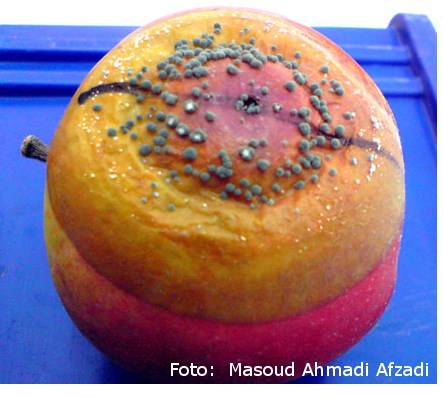Contact
hilde.nybom@slu.se, +46 44 26 5802

Protection against storage diseases
Project manager: Hilde Nybom, Plant Breeding and Biotechnology, SLU.
Project group: Estera Dey, Kemicentrum, Lund University and Ibrahim Tahir, Plant Breeding and Biotechnology, SLU.
PhD-student: Masoud Ahmadi Afzadi, Plant Breeding and Biotechnology, SLU. Partly associated to the project.
Fungal storage diseases cause significant production losses in organic apple orchards compared to conventional or IP-production. The economical deficit is especially serious when already harvested and stored fruit is attacked and destroyed. Until now, organic apples have therefore been stored for a shortened time, leading to lower prices and insufficient availability for consumers desiring domestic, organically grown fruit.
In a co-operative project between SLU-Balsgård and the Chemistry Department, Lund University, we will develop a compound from rye bran (outermost layer of the rye kernel, an underutilized bi-product), and then investigate whether this can promote resistance in apples. The active ingredient is a type of phenolic lipid, alkylresorcinols (ARs), belonging to a group of antioxidants with proven positive human health effects. In addition, ARs from rye bran have shown to be effective against plant pathogenic fungi. In our project, we will use super-critical carbon dioxide extraction to develop a high quality AR-product from different types of rye bran. This product will be tested on two apple cultivars with documented high sensitivity to fungal storage diseases in 2011 and 2012. Newly harvested apples will be inoculated with spores of common storage diseases like:
The fruit is subsequently treated by spraying 10 ml AR-containing liquid on the skin. Three different concentrations (corresponding to 2 mg, 10 mg and 50 mg active component per fruit) will be applied as well as a control with only the solvent and one without any liquid. The treated fruit will be kept in regular cold storage for 2–3 months. Symptoms of the storage diseases will be quantified immediately after taking out the fruit of storage, and after 5–10 days at ambient temperature to mimic shop conditions.
If these analyses yield promising results, we will then apply for funding to develop methods for large-scale production and application of the AR-containing preparation with a standard fruit spraying equipment.
hilde.nybom@slu.se, +46 44 26 5802